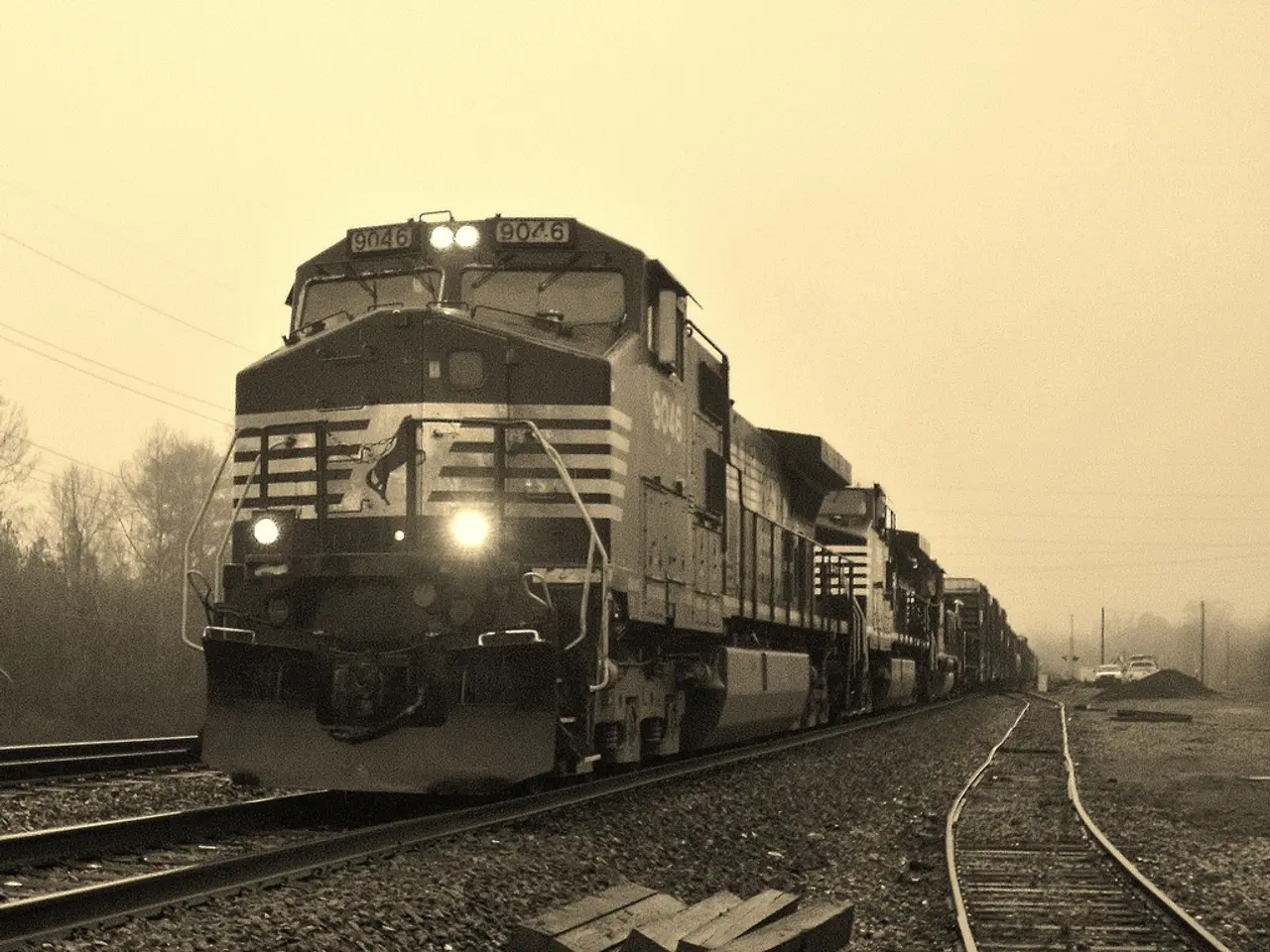Evolving Voyages: Exploring the Advancements in High-Speed Train Technology
High-Speed Rail Technology: A Green, Efficient, and Exciting Future
The world of rail travel is on the cusp of a transformative era, with high-speed rail technology leading the charge. Sustainability, efficiency, and passenger comfort are at the forefront of this revolution.
In a significant stride, China has unveiled a magnetic levitation (maglev) train capable of reaching speeds up to 373 mph (600 km/h), challenging Japan’s L0 Series maglev record of 375 mph. This groundbreaking train promises to slash travel time between cities like Beijing and Shanghai from four hours to approximately 2.5–3 hours [1][3]. A major breakthrough enabling this speed is the elimination of the "tunnel boom" impact, a pressure wave issue that has long vexed engineers, particularly with maglev trains, enhancing safety and passenger comfort [3].
In addition, China has introduced a pressure-relief buffer technology that reduces noise by 96% at high speeds, making these trains significantly quieter and more environmentally considerate compared to traditional high-speed rails and short-haul flights [2]. This quieter operation also offers a lower-noise alternative to frequent air travel, contributing to eco-friendliness.
Meanwhile, Europe is focusing on doubling high-speed rail traffic by 2030 while integrating emerging technologies like smart ticketing and driverless trains, which enhance operational efficiency and possibly safety through automation and digitalization [4].
Operational improvements are also evident in established high-speed rail networks. For instance, London St. Pancras High Speed, serving the Channel Tunnel, has significantly reduced train delays, maintaining a high-quality passenger experience despite increasing traffic. However, infrastructure challenges persist, particularly regarding asset management and resilience against severe weather, which impact safety and passenger convenience [5].
The advancements and future potential of high-speed rail technology can be summarized as follows:
| Aspect | Advancements | Future Potential | |-----------------------|------------------------------------------------------------------------------------------------|----------------------------------------------------------------------| | Speed | Maglev trains reaching ~373 mph (China), eliminating tunnel boom for safe ultra-high speed | Further speed increases, potentially surpassing plane speeds for short routes [1][3] | | Safety | Addressing tunnel boom, improved infrastructure resilience, driverless trains emerging | Better fault recovery, predictive asset management, autonomous operations [4][5] | | Efficiency | Reduced delays, digital integrations like smart ticketing, pressure-relief buffers reducing noise | Automation in operations, real-time condition forecasting for assets [2][4][5] | | Eco-friendliness | Lower noise emissions, maglev as a cleaner alternative to aviation | Expanded maglev adoption to reduce carbon and noise pollution from transport [2] | | Passenger Features | Quieter rides, improved punctuality, potential for autonomous train services | Enhanced digital services, more comfortable and seamless travel experiences [4][5] |
As high-speed rail technology continues to evolve, we are moving toward faster, safer, and greener systems with improved passenger comfort and operational excellence, driven by innovations like maglev, automation, noise reduction, and infrastructure robustness [1][2][3][4][5]. The opportunity to witness, influence, and experience a remarkable transformation in how we connect and explore our world with high-speed rail is now.
Moreover, eco-friendly technologies, such as energy-efficient designs and the integration of renewable energy sources, are becoming more common in high-speed rail. We have the potential to drive developments in high-speed rail that resonate with our values and aspirations.
Choosing high-speed rail supports a cleaner planet for future generations and offers a promising route to decrease our carbon footprint, as it generates significantly fewer greenhouse gases compared to the average car or plane. By embracing this reimagined rail travel experience, we can contribute to a greener, more efficient, and connected world.
For additional information on the topic, visit this external resource.
[1] Xinhua. (2021, May 20). China's maglev train sets new world record, reaches 603 km/h. Xinhuanet. https://www.xinhuanet.com/english/2021-05/20/c_139774944.htm
[2] Xinhua. (2021, April 20). China's new high-speed train breaks noise record. Xinhuanet. https://www.xinhuanet.com/english/2021-04/20/c_139715993.htm
[3] BBC. (2021, May 20). China's new high-speed train breaks speed record. BBC News. https://www.bbc.com/news/world-asia-china-57163666
[4] European Commission. (2021). High-speed rail in Europe. European Commission. https://ec.europa.eu/transport/modes/rail/high-speed/index_en.htm
[5] Network Rail. (2021). High-speed rail. Network Rail. https://www.networkrail.co.uk/our-railway/rail-technology/high-speed-rail/
- The advancements in high-speed rail technology include the use of innovations like maglev, aiming for further speed increases that may surpass plane speeds for short routes.
- China's new high-speed maglev train, capable of reaching 373 mph, showcases the potential of technology in enhancing safety and passenger comfort, with the elimination of the tunnel boom impact.
- Europe is integrating emerging technologies such as smart ticketing and driverless trains to increase operational efficiency and possibly safety through automation and digitalization.
- The introduction of pressure-relief buffer technology in China's high-speed rail system has resulted in a 96% noise reduction, making it more environmentally considerate compared to traditional high-speed rails and short-haul flights.
- High-speed rail advancements are not limited to speed and safety; eco-friendly technologies like energy-efficient designs and renewable energy sources are becoming more common in this industry.
- Embracing high-speed rail is a practical step toward a greener planet, as it generates fewer greenhouse gases compared to the average car or plane.
- As high-speed rail technology continues to progress, we can anticipate advancements in systems design, AI, automation, and smart technology, leading to a more connected and efficient world.




